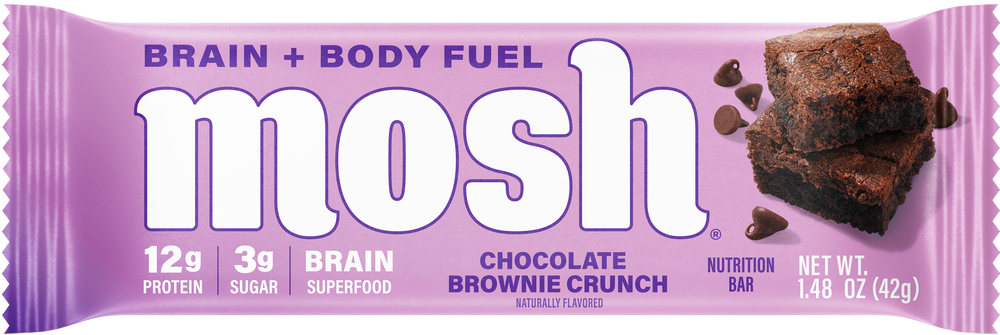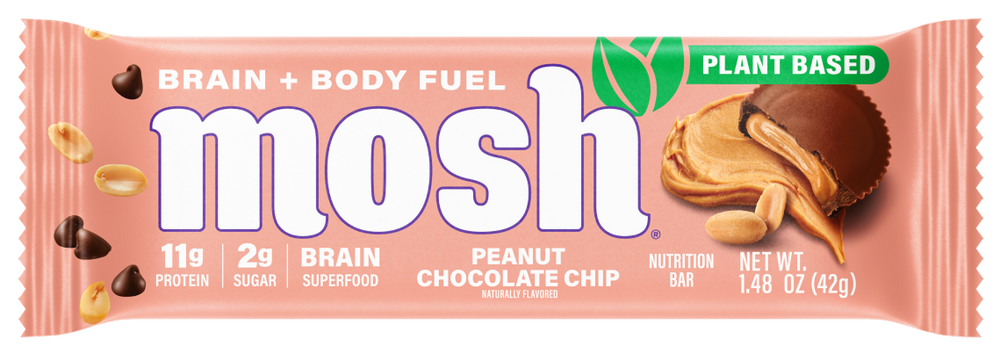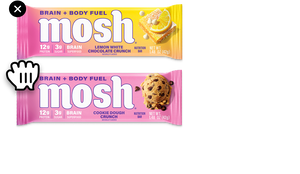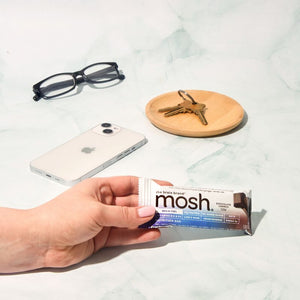Getting older can be challenging. The harsh reality is that humans simply aren’t designed to live forever. The longest-living person in recorded history was Jeanne Louise Calment, who lived to be 122 years old (1875-1997).
Calment was born before telephones were invented but lived long enough to see the rise of cell phones, text messages, and e-mail. Her record-setting lifespan stands in stark contrast to the reasonable life expectancy of the average person of just under 79 years.
While a majority of us won’t be able to do much to challenge Calment’s record, there are quite a few things we can do to give meaning to the term “golden years.”
One easy place to start? Making sure to consume enough protein each day.
What To Know About Protein
Protein is one of three essential macronutrients (alongside fat and carbohydrates). Every part of the human body contains some amount of protein.
The primary function of protein is to act as a building block for the body. Bones, muscles, cartilage, organs, skin, hair, and nails are all made up of protein. The overall health of these body parts is directly linked to the amount of protein in your diet.
Perhaps protein's most commonly known feature is its ability to support muscles. Protein provides the structure for your muscles, supports muscle recovery, and helps to maintain current muscle mass. However, protein is involved with more than just muscle building as it plays a role in several important bodily functions.
Protein comprises 20 different amino acids with different protein types featuring different combinations. These amino acids are used by the body for everything listed above, as well as providing energy, helping red blood cells carry oxygen, supporting the production of neurotransmitters in the brain, creating enzymes used for various purposes, supporting the immune system, and maintaining your digestive system.
Why Is Protein So Important for Seniors?
People of all ages can benefit from getting enough protein each day. However, it’s a bigger deal for seniors to ensure they meet their requirements because of a condition known as sarcopenia, or age-related muscle loss.
You naturally start to lose muscle mass and strength as you get older. Normally, the process will start sometime in your 30s or 40s. The rate at which you lose muscle mass will greatly increase sometime between 65 and 80. For most people, it’s roughly a three to eight percent reduction in muscle mass for every decade.
Physical exercise is often recommended to help reduce this natural loss of muscle — it’s widely regarded as the only proven method for preventing and improving sarcopenia-related symptoms.
However, exercise is only one part of the solution, as you’ll also need to ensure you’re getting enough protein each day.
How Much Protein Should You Eat in a Day?
Generally, health experts recommend eating about 0.36 grams of protein for every pound that you weigh.
If you’re 150 pounds, you should eat at least 54 grams of protein daily. If you’re 200 pounds, the minimum amount is 72 grams of protein.
The problem with this method is that it doesn’t consider issues such as sarcopenia. Since the body starts to struggle with maintaining its current muscle mass, it’s recommended to increase the amount of protein in your diet. For that reason, seniors should generally aim for roughly 0.43 grams of protein for every pound they weigh.
The new equation would mean that seniors weighing 150 pounds need 64.5 grams of protein, and people at 200 pounds need 86 grams.
The Potential Challenges for Seniors
Getting enough protein daily in the United States is generally fairly easy. Most classic American meals are fairly high protein thanks to hefty servings of meat or dairy.
Even most vegetarian and vegan diets include enough plant-based protein to meet the minimum requirements. Whole food ingredients like peanut butter, tofu, cashews, and pumpkin seeds are just a few examples of meatless and dairy-free options for protein; you can also opt for vegan protein supplements, which often include pea protein and soy protein.
Often, the challenge for seniors to meet their protein requirements stems from the difficulty of establishing a structured day. Life as a retiree or empty nester can be full of free time, and it can take a while to adjust. Something as simple as maintaining meal times (nonetheless including the right nutrients at every meal) can suddenly become a challenge.
It can be easy to get bored during the day and wander in the kitchen looking for a snack. While there are plenty of healthy snack options for the morning and afternoon, many people opt for unhealthy and convenient ones instead.
Why go through the trouble of cooking up a healthy meal when you can eat a bag of sea salt pretzels and wash it down with chocolate chip cookie dough? While that might sound delicious, foods like that are loaded with simple carbohydrates, added sugars, and sodium rarely contain enough protein.
Substituting some of these snacks with a high-quality protein bar can go a long way toward helping you meet your protein demands.
What Should I Look for in a Protein Bar?
Finding a protein bar at your local grocery store isn't hard. You’d probably get several thousand results with a quick search on Amazon — anything from crunchy peanut butter chocolate protein bars to plant-based protein bars to granola held together with a little almond butter and everything in between.
The problem isn’t finding a protein bar; it’s finding the best protein bars. The truth is that not all protein bars are created equally.
Plenty of options are simply candy bars masquerading as protein bars. By being more selective, you can find a high-qualityprotein bar that will give you nutrients you actually need.
Here’s what to pay attention to in those nutrition facts.
The Amount of Protein
The point of a healthy protein bar is to help you increase your protein intake. Therefore, the first thing that you should check is the amount of protein per serving.
You may want to look for an option that packs the most powerful protein punch possible. If the bar doesn’t have at least 10 grams of protein, it may not be the best option.
The Quality of Protein
Looking for a protein bar that gives you the most protein is important. However, the quality of the protein is equally as important as the quantity. Protein isolates can come from a large variety of sources; with some types of protein being preferable to others.
Grass-fedwhey protein sources typically offer higher omega-3 fatty acids, vitamin E, and conjugated linoleic acids (CLA).
Either Low Carbs or High Fiber
High levels of carbs are found in many foods and are challenging to avoid. Just ask anyone that’s attempted the keto diet. Ideally, you should look for a protein bar with lower carbs.
The good news is that fiber acts as a counterweight to carbs. The net carbs of a protein bar are the total amount minus the fiber content. In other words, you can generally go for a protein bar high in carbs as long as it’s also high in fiber. A protein bar with at least five grams of fiber would be an excellent place to start to help you limit your net carbs to 20 or lower.
The Calories
Calories are the energy released whenever your body digests and breaks down a particular food item. The total amount of calories you need each day will vary depending on a few factors like your age, sex, and level of physical activity. Eating more than your daily calorie requirement can lead to weight gain.
Since you’re trying to increase your protein intake, weight loss and calories likely arne’t your concern.
That said, if you are looking to shed a few pounds, remember that protein bars are designed to serve as a post-workout snack or even replace unhealthy snacks, but shouldn’t be used as regular meal replacements. If you’re having trouble figuring out the right caloric intake for your weight goals, consider the help of a nutritionist or registered dietitian to help guide you.
The Type of Fat
Earlier, we mentioned that fat is a macronutrient like protein. While fat has a worse reputation than protein, it’s essential to living a healthy life. The key thing to remember is that there are different types of fat — healthy and unhealthy.
Saturated fats are the unhealthy kind of fat that can be limited. Unsaturated fats are healthy fats that can promote positive health. For best results, look for a protein bar with a significantly higher ratio of unsaturated and saturated fat.
The Added Sugar Content
There are few things that your brain loves more than sugar. Unfortunately, food manufacturers know this and often add copious amounts of sugar, artificial sweeteners, and sugar alcohol to their food.
This little trick can drive your brain wild and leave you wanting even more. Although suppressing your sugar cravings can be extremely difficult, it's best to avoid anything that includes added sugar. Ideally, look for protein bars with just a few grams of sugar at most — bonus points for zero grams of added sugar.
The Taste
Just because you’re looking for a protein bar without added sugar doesn’t mean taste loses its importance. It might not taste as good as a chewy homemade fudge brownie, but you shouldn’t have to settle for a chalky aftertaste with your protein bar.
Plenty of options are available (we offer several mouth-watering protein bar flavors, ourself). It’s important to find a protein bar that you enjoy eating, as it’s likely to become a part of your daily routine. If you don’t like the taste of it, it won’t be long before you return to the unhealthy snacks that give your brain the sugary overload it’s telling you it wants (but definitely doesn’t need).
The Cost
Protein bars can sometimes be found in the snack aisle, but depending on the ingredients list, they’re closer to a supplement with how they can be utilized. The problem is that a high-qualityprotein bar will likely come with a steep price.
High-quality bars can be hard to find for cheap, so the price is an understandable concern. The best thing you can do is look for different deals and offers from the manufacturer. You might be surprised by how much money you can save by buying in bulk!
Wrapping Things Up
Aging comes with a new set of challenges, like ensuring your diet contains what you need. The same recipes that used to be enough in the “good old days” may not cut it anymore.
Simply eating one protein bar won’t be enough to give you all the protein you need, but it can give you an excellent start to meeting your daily requirements. If you throw in a little bit of physical exercise and some post-workout protein powder, you may be well on your way to maintaining (or even boosting) your muscle mass.
Sources:
Fat and Calories: The Difference & Recommended Intake | Cleveland Clinic
How To Succeed At The Hardest Part Of Retirement | Forbes
Protein | Physician’s Committee for Responsible Medicine
Nutrition for Sarcopenia | PMC
How Much Protein Do You Need Every Day? | Harvard Health
Exercise as a Remedy for Sarcopenia | NCBI Bookshelf
Sarcopenia (Muscle Loss): Symptoms & Causes | Cleveland Clinic
Sarcopenia in Older Adults | PMC
The Shape and Structure of Proteins - Molecular Biology of the Cell | NCBI Bookshelf
Dietary Protein and Muscle Mass: Translating Science to Application and Health Benefit | PMC
Protein | The Nutrition Source | Harvard School of Public Health


























